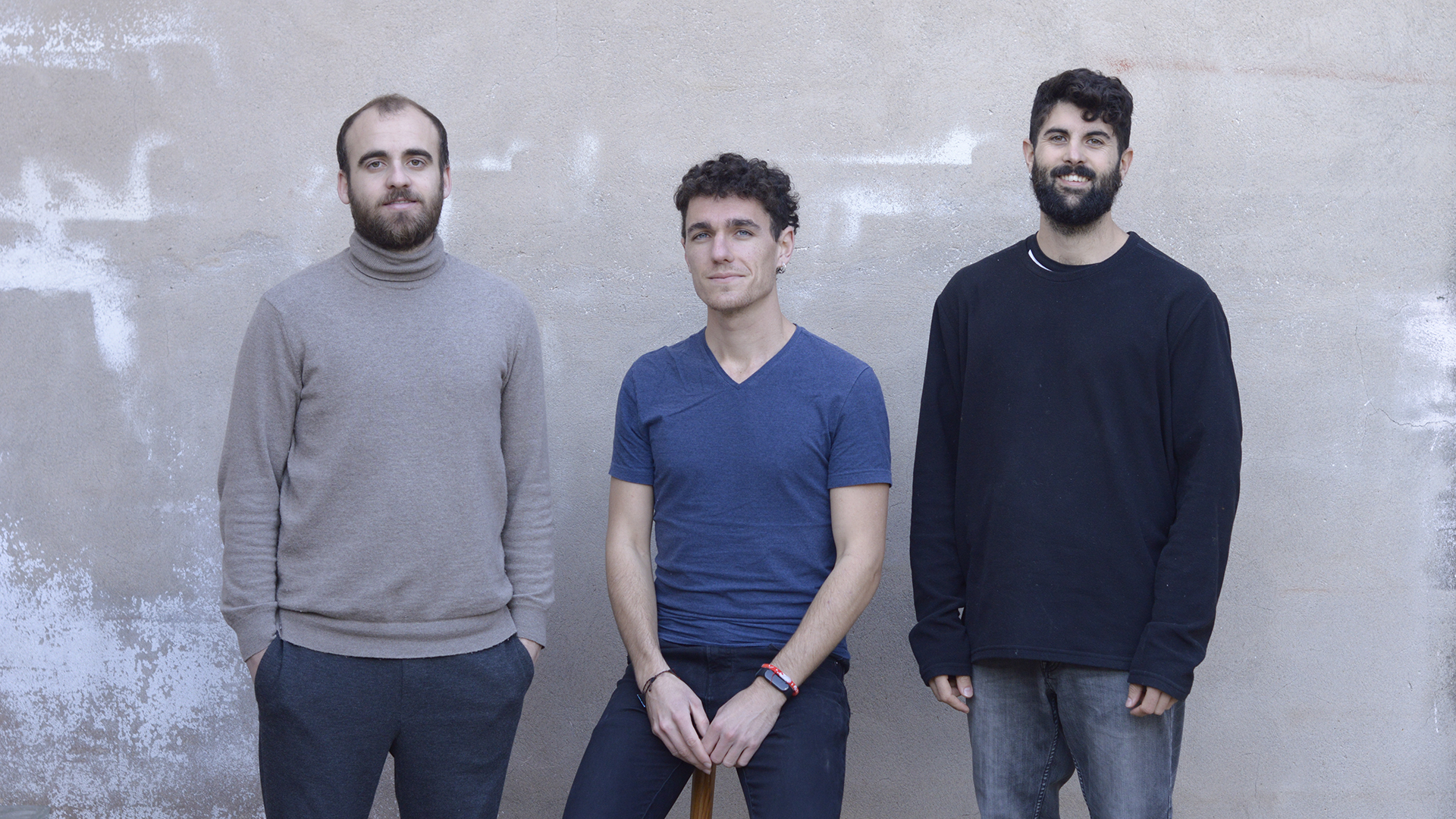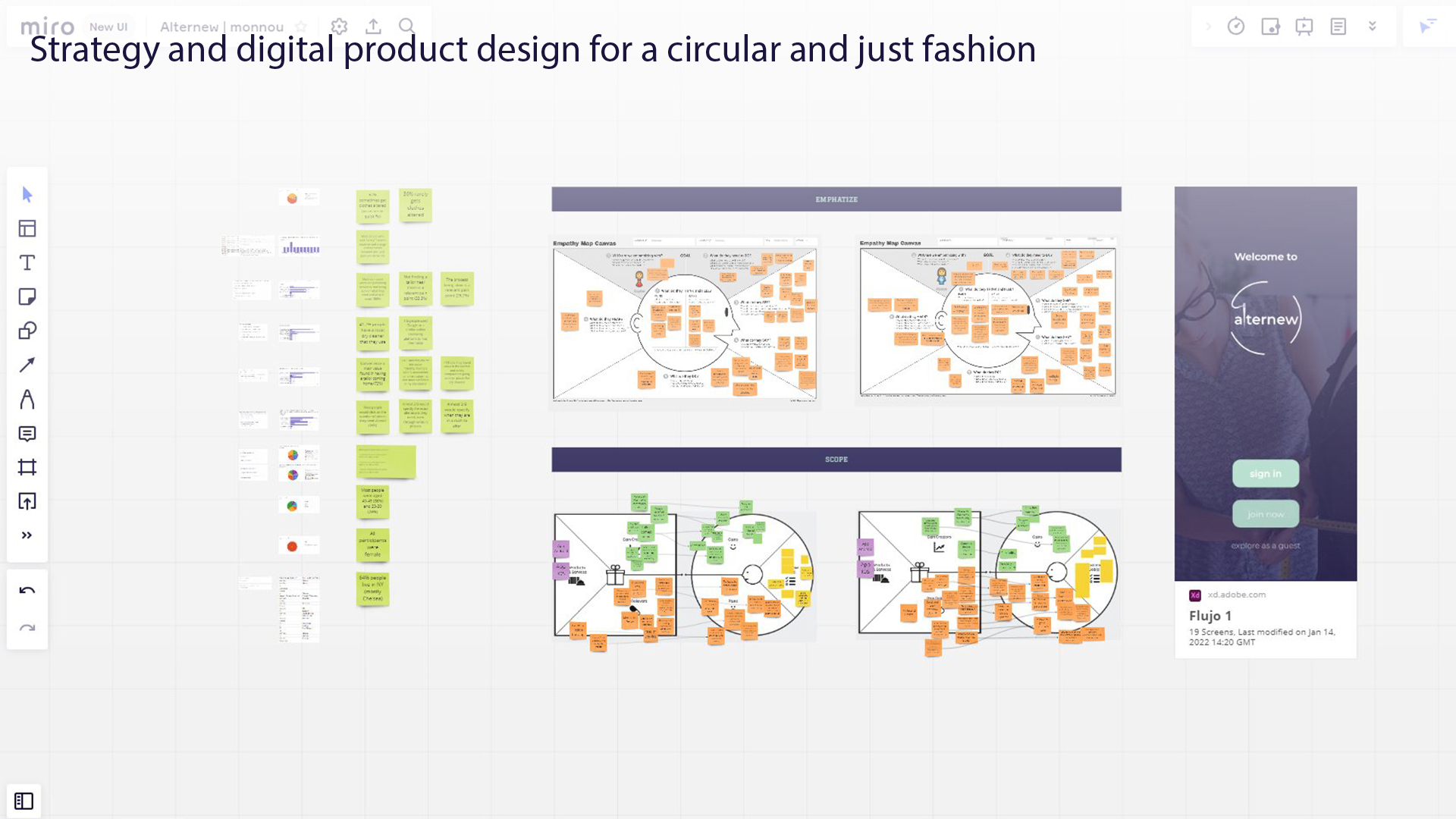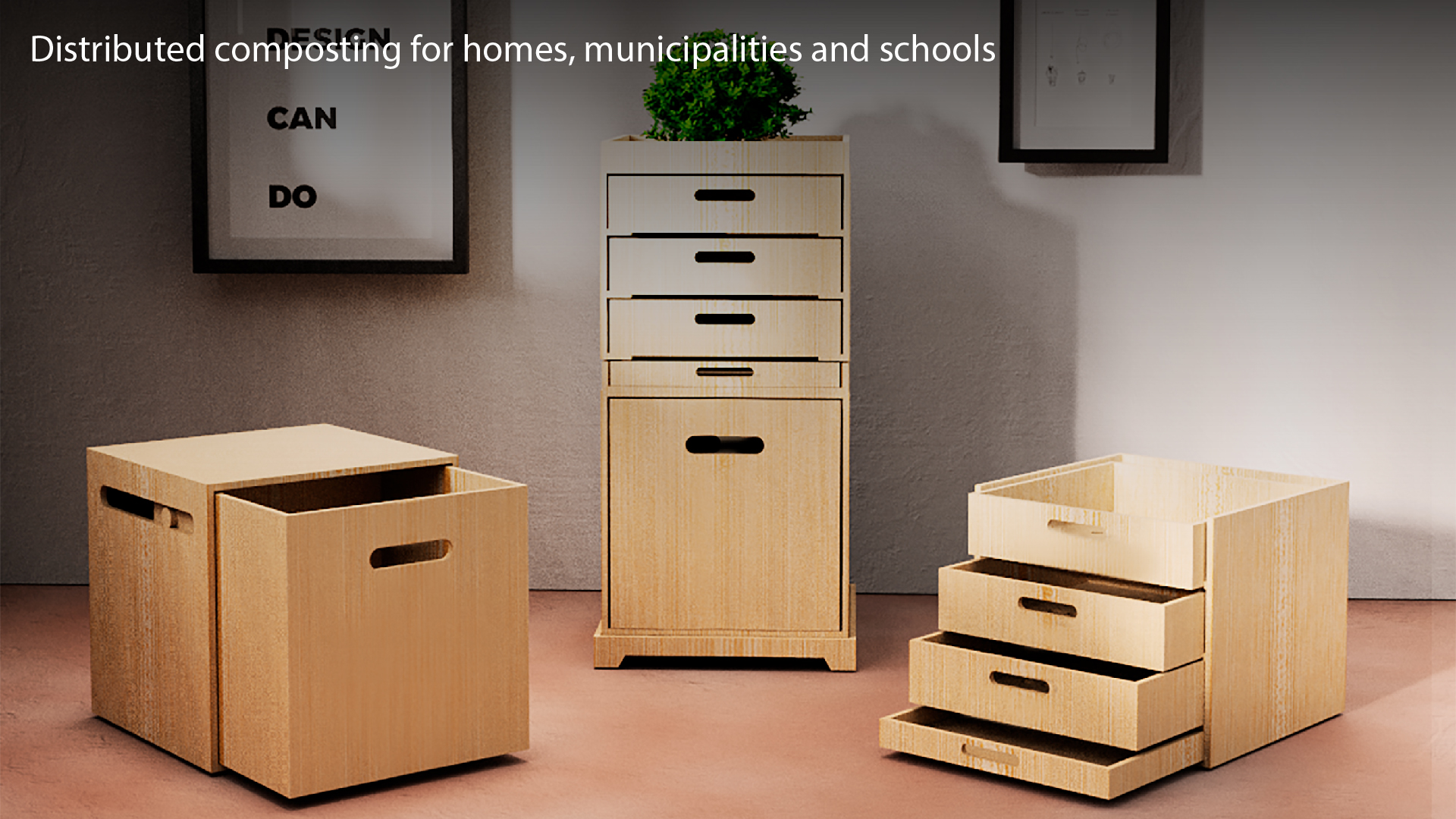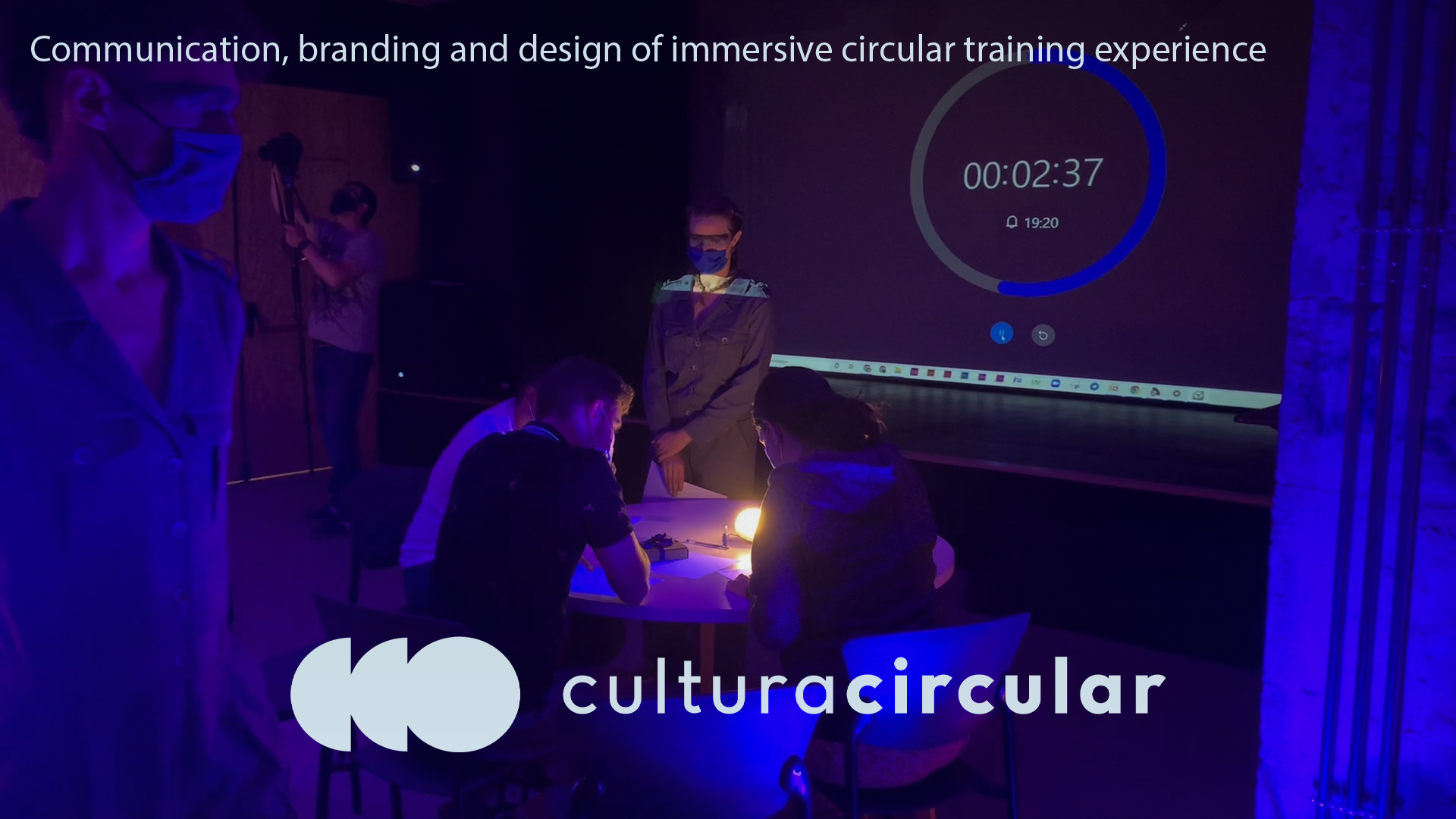Regenerative and distributive design
Basic information
Project Title
Full project title
Category
Project Description
Monnou is a studio that applies design to Triple Impact. This means introducing design strategies and processes in organizations to help them transition to regenerative and distributive models. Collaborating with clients and different stakeholders, we start with research to identify real needs and ways to facilitate change, we design strategies, and then deliver the products, services and communications which are part of this strategy. Circular and Social Innovation for designing a new world.
Geographical Scope
Project Region
Urban or rural issues
Physical or other transformations
EU Programme or fund
Which funds
Description of the project
Summary
The transition to more sustainable and inclusive models starts with design. Design is not only about products and graphics, or about aesthetics either. It is about businesses and politics as well. It is about defining how things will be in the first place. It is about strategy.
Monnou studio accompanies organizations both in the private and public sector in the transition to regenerative and distributive models by design.
We offer circular and social innovation. Starting from research and strategy design with the client/collaborator, we end delivering the products, services, communications or reports that are necessary for implementing this strategy in order to transition to a more regenerative and distributive organization.
We also offer training to other design professionals, both freelancers or other design studios and designers inside organizations. This way, they can become change agents and collaborate with us for specific deliverables where they have expertise (i.e. graphics or industrial products).
Key objectives for sustainability
General objective. Transition of industries and public sector towards regenerative models.
Specific objective 1. Helping SMEs and entrepreneurs in the (re)design of their circular business models, products and services.
Specific objective 2. Collaborating with Public Administrations in the (re)design of circular business models and services in the territory.
How:
Having training and experience in fields like International Cooperation for Development, Social Design and co-design, communication, Circular Economy, Industrial Design, technological R&D and Digital Transformation, we have different skills and a broad vision that helps us design sustainability.
We are to design not only products which are sustainable themselves, or communications which display sustainability of the organizations. We are also to design circular strategies together with the organizations, in order to assure that later products and communications are circular too.
We have a broad vision of circular businesses and how we can apply design to achieve circularity. At the same time, we are good facilitators, who aim to co-design solutions to those challenges which are more complex and require different skills and perspectives.
Key objectives for aesthetics and quality
General objective. Transition of industries and public sector towards regenerative and distributive models.
Specific objective 1. Designing experiences related to circularity of businesses, products and services in a way that makes them accessible and attractive to most people.
Specific objective 2. Contributing to narratives that inspire new cultural values and change from a linear and fossil-based economy to a circular one.
How:
Making circular products and services attractive and with little pain points is key to scale circularity. As designers, we have experience with user research and experience design, which will be a key to assuring that the regenerative and distributive models we design finally function and are accessible and desirable for stakeholders.
Design as we understand it goes beyond aesthetics, but does not forget it. After research, we have the training and the ability to assure that the experiences we are designing are of quality and have the aesthetic value that is required.
Aesthetics play a key role in creating circular products, so that they are attractive and desirable to people (and therefore, people use these instead of other linear products) and, at the same time, they give positive experiences to those who use them. Aesthetics also play an important role in communication. As we accompany organizations with the design of their communications for social impact (brands and other communication products), we must assure that their aesthetics are appropriate for what we are communicating.
In the end, the transition to new models must be a pleasant experience, so that it actually occurs. And this transition also requires new aesthetics and narratives.
Key objectives for inclusion
eGeneral objective. Transition of industries and public sector towards distributive models.
Specific objective 1. Helping SMEs and entrepreneurs in the (re)design of business models, products and services that make circular value distributive and accessible, through social innovation and co-design.
Specific objective 2. Collaborating with Public Administration in the (re)design of business models and services that make circular value distributive and accessible, through social innovation and co-design.
Specific objective 3. Include diverse visions (in terms of gender, procedence, etc.) in the design process.
How:
We are helping different SMEs and entrepreneurs to leverage their circular value, by means of designing brands, communications, products and services which are really circular and communicate this circular value. And we do this in a non-expensive way, starting with cheap prototypes to validate before moving to more expensive products.
When (re)designing models with the Public Sector, we co-design these with different stakeholders (including citizens), to assure that the products and services are inclusive and accessible. When working with the Private Sector we also co-design and bring different stakeholders that were initially not considered by the client/collaborator. We have found that, even if the entrepreneur or SME that starts a project with us has deep social awareness, we usually have to make them aware of some stakeholders that were not participating in the process. And we do that by means of the very methodology.
Rather than competing with every other design studio or agency, we aim to collaborate with them for some projects. We aim to find which specific expertise each professional has, in order to coordinate regenerative and distributive projects where a lot of professionals can benefit.
We are linked to local cultural spaces, citizen laboratories and associations that allow us to activate social innovation and citizen participation.
Physical or other transformations
Innovative character
Our Western philosophy and society were somewhat born in Ancient Greece, where there was an expression called “kalòs kai agathós”. This expression meant that the Beautiful (kalòs) and the Good (agathós) were in close relationship and had to be in balance. Aesthetics and Ethics. We are heirs of this philosophy.
As a design studio, what we design must be circular and distribute this circular value among stakeholders. We consider all stakeholders in order to design functional solutions that are both regenerative (circular), which is mainly about environmental impact, but also distributive (accessible, inclusive and benefiting multiple parts), which is mainly about social impact. If a product or service is not accessible to most people, it will not contribute to real change even if it is circular, since most people will not be able to use it. At the same time, if different stakeholders do not receive value from circular design, they will not participate in it.
We also consider stakeholders in order to design meaningful solutions. Solutions that have shared values and are therefore sustainable in time. Solutions that are aesthetic and accepted by all.
Design has the power to change cultural views, and to create new economical models. It is communicative and practical at the same time. Monnou design studio focuses on making organizations with their products and services more regenerative and distributive: we aim to help them transition for Good. But their communication, their appearance and the experience they provide with their products and services, must be also Beautiful.




